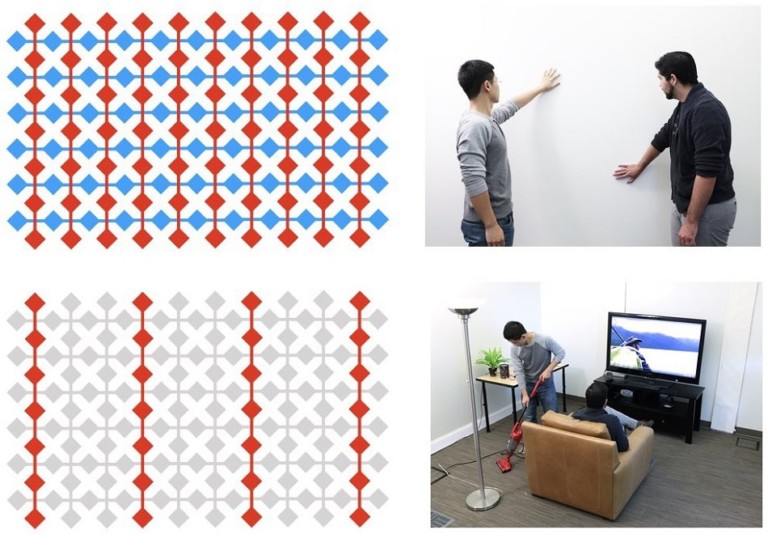Disney Research has teamed up with Carnegie Mellon University to design a conductive paint that can be applied to any wall to make the surface interactive.
Wall++ enhances walls by providing interactivity and context-aware sensing. Once the paint is applied to a surface, the wall can function like a smartphone touchscreen capable of hover tracking and gesture sensing.
The technology can track users’ positions in the room as well as that of electrical appliances, even sensing when they are being used.
An abstract of a paper on the technology states: “Our wall treatment and sensing hardware can track users’ touch and gestures, as well as estimate body pose if they are close.
“By capturing airborne electromagnetic noise, we can also detect what appliances are active and where they are located. Through a series of evaluations, we demonstrate Wall++ can enable robust room-scale interactive and context-aware applications.”
The paint is a conductive material containing nickel. The researchers apply this to walls in a grid to create electrodes, before painting over them with regular paint. The painted electrodes turn the wall into an electromagnetic sensor and touch interface.
The team currently estimates the cost of the paint at about $20 per square metre, but hope to lower the price with further refinement. According to Yang Zhang, a PhD student who led the research, the walls could potentially serve as an interface for controlling smart home appliances.
“People purchase smart appliances that can easily cost thousands of dollars, or you can buy after market sensors that people can tag to everyday objects,” he told Smithsonian.com. “But you don’t want your beautiful kitchen to be tagged with all these sensors. And batteries have to be recharged.”
Zhang also believes the walls could be tuned to the specific needs of different users. Examples he offered include playing your favourite songs when you enter a room or notifying family members if an elderly relative appears to have fallen.
The team is currently working on expanding the range of the paint. It can currently detect appliances up to 3m away, but Zhang hopes to extend this to 10m or even 20m. He believes that the paint could be commercially available in the next two to three years.
https://www.smithsonianmag.com/innovation/this-conductive-paint-turns-walls-into-giant-touchscreens-180968922/?utm_source=smithsoniandaily&utm_medium=email&utm_campaign=20180430-daily-responsive&spMailingID=34098962&spUserID=NDYyNDg4MTIyMTc3S0&spJobID=1280004348&spReportId=MTI4MDAwNDM0OAS2












